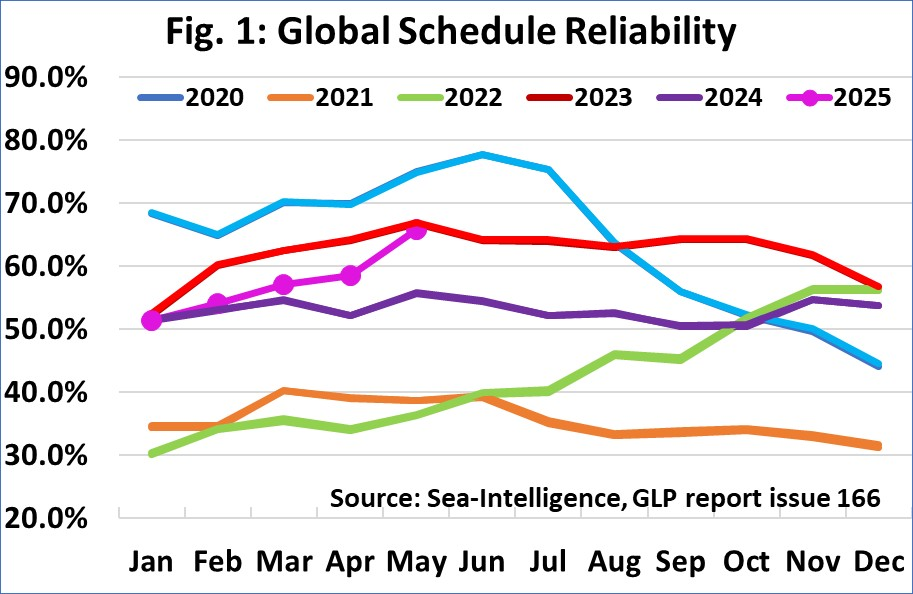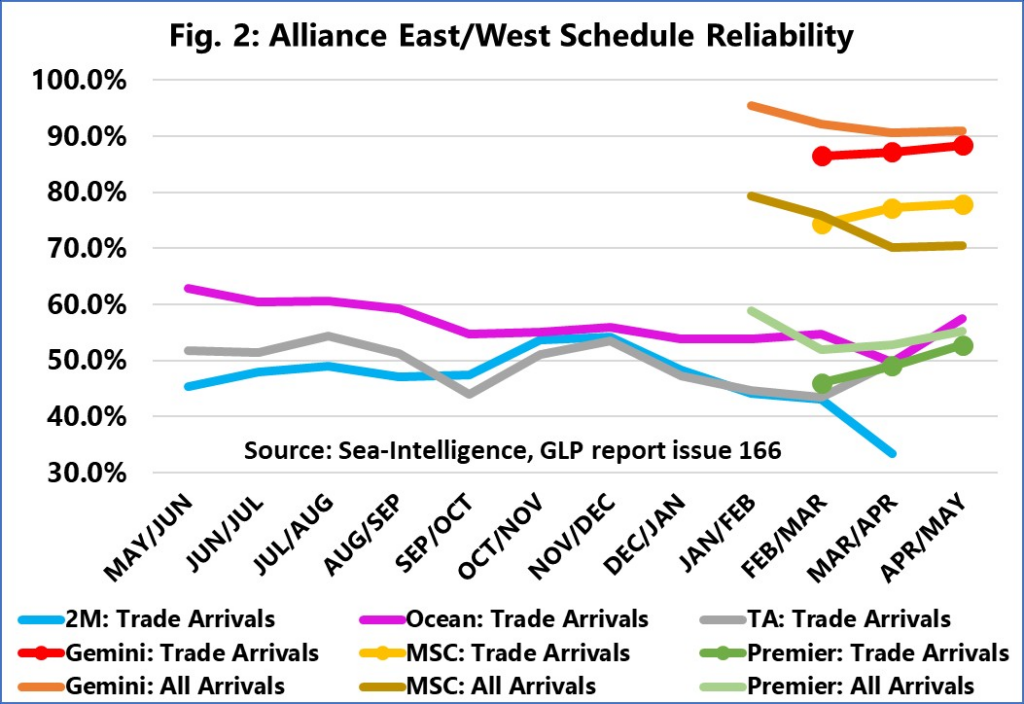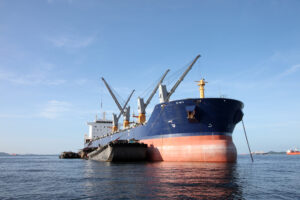
Denmark-based research and analysis specialist Sea‑Intelligence reported that global schedule reliability saw a sharp 7.4 percentage point improvement M/M in May and reached 65.8%.
Sea-Intelligence released its 166 issue of the Global Liner Performance (GLP) report, with schedule reliability figures up to and including May 2025.
“This is the highest figure recorded since November 2023 and continues the trend of consistent M/M improvements since February this year,” said Alan Murphy, chief executive officer of Sea-Intelligence.
On a Y/Y level, schedule reliability was up 10.0 percentage points.
Maersk has climbed in the first place as the most reliable top-13 carrier in the report with schedule reliability of 75.9%, followed by Hapag-Lloyd with 72.5%.
The next 6 carriers were in the 60%-70% range, and the remaining carriers were in the 55%-60% range.
Traditionally, alliance scores are based on just the arrivals in destination regions, but as that metric was not available for the new alliances in February, Sea-Intelligence introduced a new measure, based on all arrivals, including the origin region calls on the East/West trades.
Sea-Intelligence continues to present both measures, “All arrivals” which is comparable to the February measure, and “Trade arrivals”, which is comparable to the “old” alliances. When the new alliances are fully rolled out, these two measures will converge.
According to the report, in April/May 2025, Gemini Cooperation recorded 90.9% schedule reliability across ALL arrivals, and 88.4% across TRADE arrivals, followed by MSC at 70.5% for ALL arrivals and 77.9% for TRADE arrivals, while Premier Alliance recorded 55.2% for ALL arrivals and 52.7% across TRADE Arrivals. For the “old” alliances, “ALL arrivals” are equal to “TRADE arrivals”, and Ocean Alliance scored 57.4%.

It is important to stress though, that the new alliances will only be fully rolled out in July 2025, and only then will it be possible to truly evaluate their performance.
The full report can be found here.



